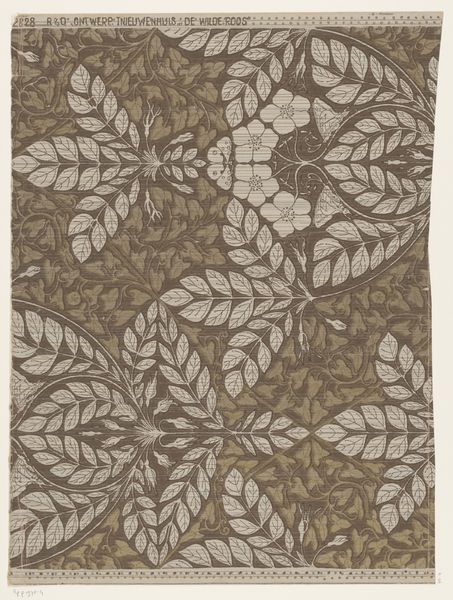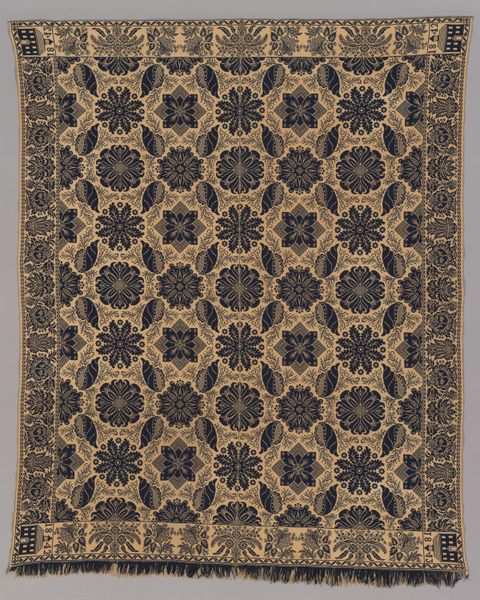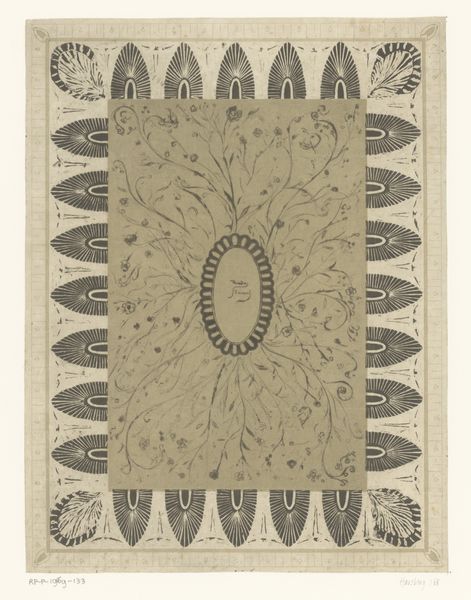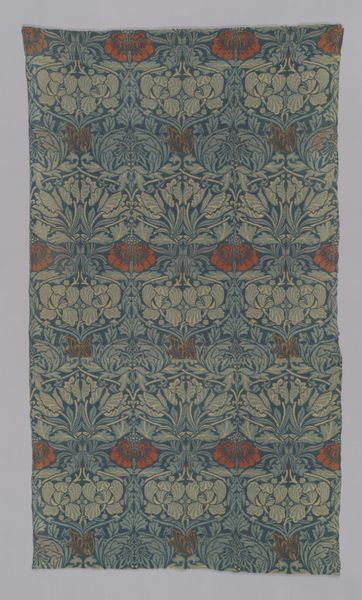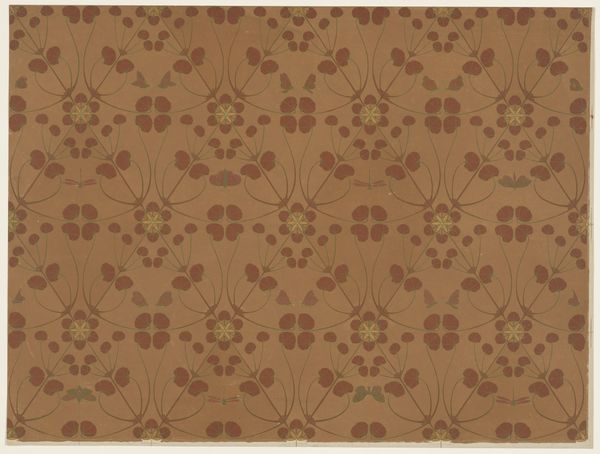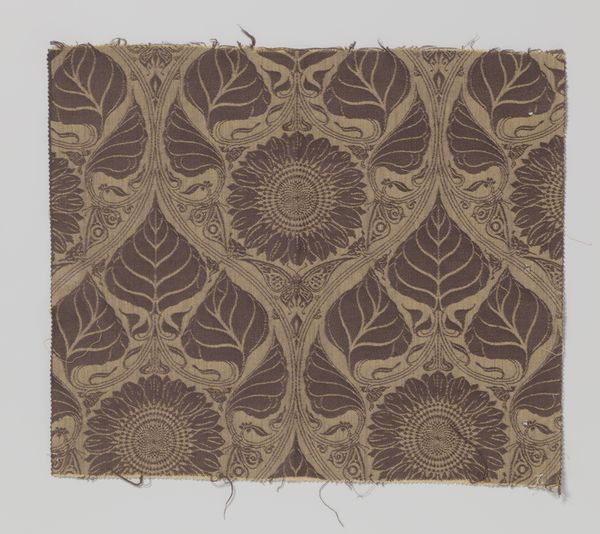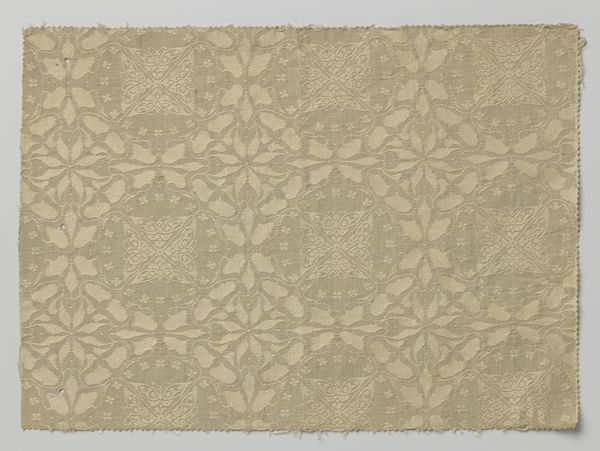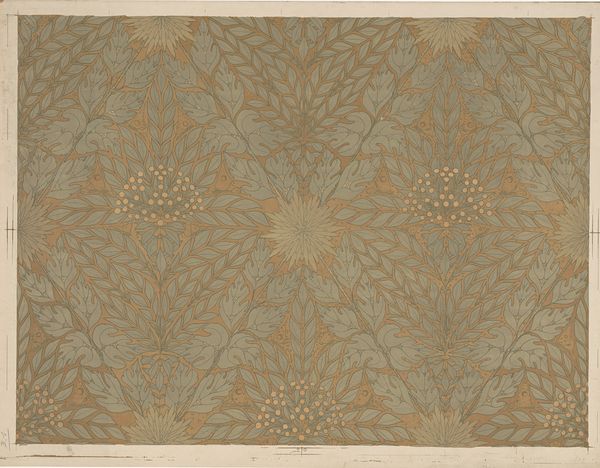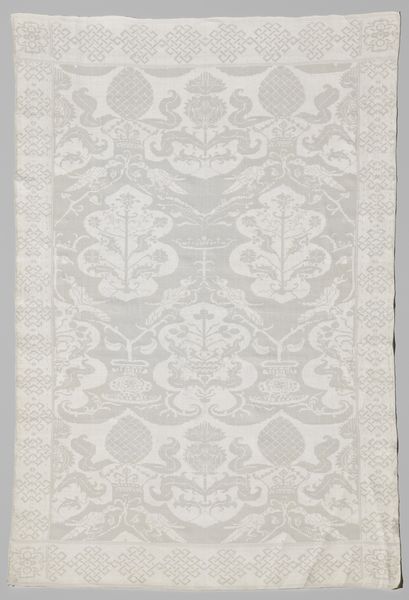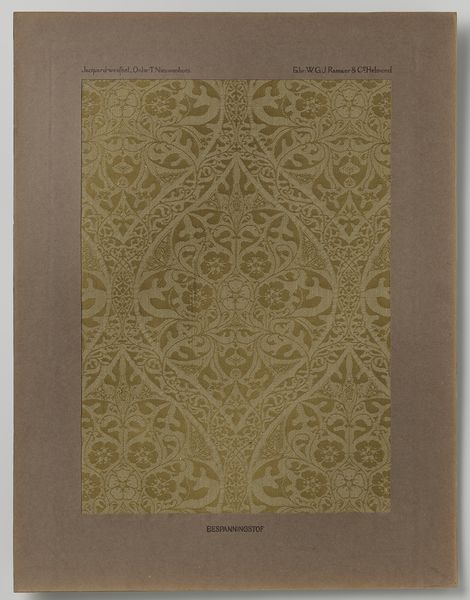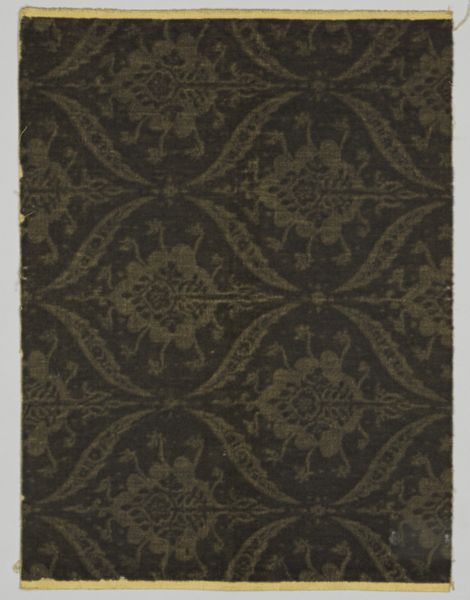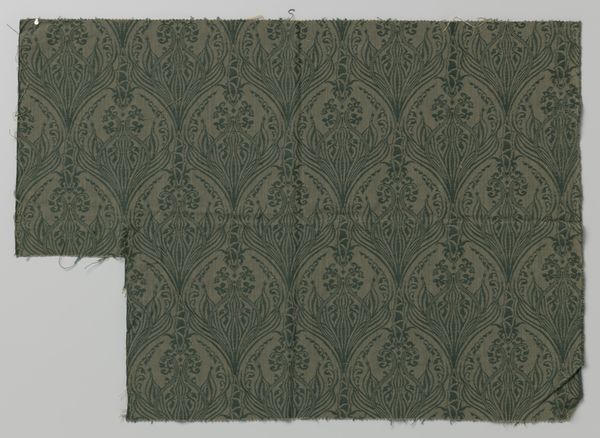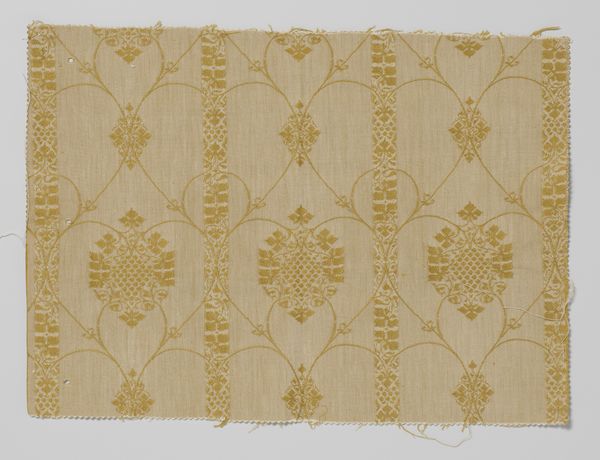
drawing, graphic-art, paper
#
drawing
#
graphic-art
#
naturalistic pattern
#
organic
#
art-nouveau
#
paper
#
organic pattern
#
textile design
#
decorative-art
Dimensions: height 602 mm, width 499 mm
Copyright: Rijks Museum: Open Domain
Editor: Here we have Theo Nieuwenhuis's "Ontwerp voor behang met bladeren en bloemen," a wallpaper design featuring leaves and flowers, likely created between 1876 and 1951. It’s a mixed-media piece, combining drawing, print and fibre-art techniques. It’s really soothing. What narratives or contexts do you find especially relevant when looking at this piece? Curator: It's important to remember that decorative arts, often seen as "lesser" arts, have historically been associated with women's labor. This design, situated within the Art Nouveau movement, challenges that hierarchy, attempting to bring beauty into everyday life. Does this emphasis on the everyday challenge traditional art hierarchies in your opinion? Editor: Absolutely! I hadn't considered how this kind of design seeks to democratize art, making it accessible and functional. I think it definitely challenges those hierarchies. Curator: Exactly! Consider the historical context. Mass production was rapidly changing society. The Arts and Crafts movement, of which Art Nouveau is a part, reacted against the dehumanizing aspects of industrialization. Nieuwenhuis is participating in a broader social commentary by creating this wallpaper design. Where do you see resistance embedded within these seemingly innocent organic patterns? Editor: I suppose it’s the focus on handcraftsmanship versus machine production, and how it infuses value into natural elements during an era dominated by industry? Curator: Precisely! It's an interesting paradox—utilizing design to reclaim organic forms within an increasingly inorganic world. How might contemporary pattern-and-decoration movements further this social and artistic dialogue? Editor: Maybe it continues with artists reflecting a world that is in need of attention, while democratizing by blurring the boundaries between fine art and crafts. Thank you for your insights. It shifted my whole perspective on this piece! Curator: My pleasure! Considering art as a social artifact always deepens our understanding and opens up exciting avenues for interpretation.
Comments
No comments
Be the first to comment and join the conversation on the ultimate creative platform.
